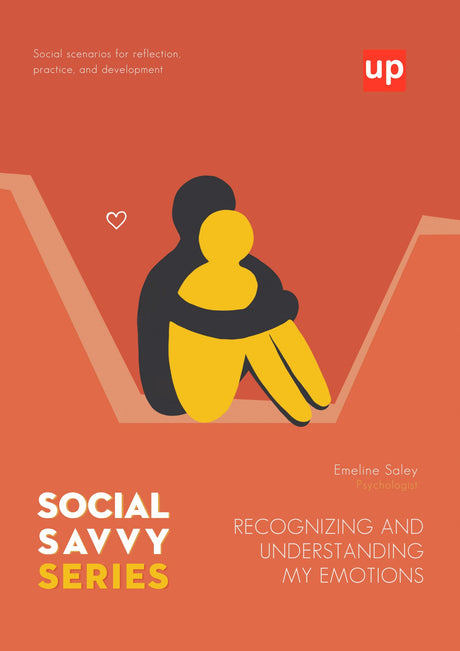Domestic violence, often a silent and hidden issue, bears a significant impact on the lives of numerous individuals across the globe. Understanding the dynamics, forms, and effects of domestic violence can equip us to create safer environments for victims and contribute to a more empathetic society. This blog post aims to shed light on this crucial topic, providing a comprehensive guide to domestic violence and its far-reaching implications.
Key Takeaways
-
Domestic violence is an extensive issue that affects individuals across all social strata, comprising various forms of abuse such as physical, sexual, emotional, and economic, and is not limited to a specific gender or type of relationship.
-
The Power and Control Wheel provides a framework for understanding tactics used by abusers to dominate victims, which includes intimidation, isolation, emotional manipulation, and using children, underscoring the importance of identifying such patterns to assist victims.
-
Victims face considerable barriers when attempting to leave abusive relationships, including the risk of escalated violence, financial dependency, and social isolation, highlighting the need for accessible resources and legal protections to ensure their safety and recovery.
Unveiling Domestic Violence: Definitions and Dynamics

Domestic violence is a menacing reality that prevails across cultures, impacting individuals of diverse backgrounds and relationships. Abusive behavior is a pattern that aims to gain power and control over an intimate partner or family member. Such behavior aims to manipulate and exert dominance over the other person. This form of violence is not confined to physical injury but extends to:
-
emotional and psychological harm, significantly eroding the victim’s self-worth
-
financial control and manipulation
-
isolation from friends and family
-
threats and intimidation
-
sexual coercion and assault
It is important to recognize the signs of domestic violence and to support victims in seeking help and safety.
Moreover, the emotional ramifications of domestic violence are severe, often leading to:
-
feelings of fear
-
confusion
-
a significant reduction in self-esteem and autonomy
Victims may prioritize stopping the violence over ending the relationship due to the significant challenges associated with terminating the intimate partner relationship. Remember, domestic violence is not limited to a specific gender. Men can also experience abuse, particularly verbal and emotional mistreatment, irrespective of their sexual orientation.
In the absence of intervention, the violence may escalate over time, resulting in more severe incidents and even lethal outcomes. This emphasizes the need for prompt intervention and resource provision for victims.
The Faces of Abuse: Physical, Sexual, Emotional, Economic
Abuse, a critical element of domestic violence, can manifest in various forms, each causing significant harm to the victim. Physical abuse, a commonly recognized form, involves the use of physical force that may result in serious injury or even death. This type of abuse is often referred to as physical violence. Psychological abuse, another form of domestic violence, can cause emotional and mental harm to the victim. Both of these forms contribute to the larger issue of violent and abusive behavior.
Sexual abuse, a form of sexual violence, within intimate partner violence encompasses forcing an individual into undesirable, harmful, or degrading sexual activities. Economic abuse, a less conspicuous form of abuse, involves controlling financial resources, leading to the victim’s financial dependence and adversity.
Intimate Partners and Family Members: Who Can Be Affected?
Domestic and sexual violence is not confined to specific relationships or social strata. Both intimate partners and domestic violence victims, irrespective of their relationship status, age, gender, or socioeconomic background, can be affected by such violence, including family members.
From young dating couples to aged married couples, from affluent families to low-income households, domestic violence is a pervasive issue. Dispelling the myth that domestic violence only affects certain demographics is vital. The reality is that it affects all sections of society, making it a widespread and urgent problem that needs addressing.

Deciphering the Power and Control Wheel
The Power and Control Wheel, developed during the 1980s by the Domestic Abuse Intervention Project (DAIP), offers a profound insight into the tactics employed by abusers to establish dominance over their victims. This wheel encapsulates various abusive strategies, such as:
-
Intimidation
-
Isolation
-
Manipulation
-
Emotional abuse
-
Using children
-
Minimizing, denying, and blaming
-
Economic abuse
-
Coercion and threats
-
Male privilege
These strategies are designed to maintain control.
Isolation, as a tactic, involves:
-
Restricting the victim’s external participation
-
Downplaying or denying the abuse
-
Shifting the blame onto the victim
-
Involving children
All of these actions are part of the abuser’s controlling behavior.
Manipulation, another significant tactic within this framework, can encompass:
-
coercion and threats
-
intimidation
-
emotional abuse
-
minimizing the victim’s experiences
Comprehending this wheel provides victims and their allies with the ability to identify abusive behavior patterns, a pivotal stride towards escaping the cycles of violence.
The Abusive Cycle: Patterns of Violent Behavior
The dynamics of abusive relationships often follow a cyclical pattern known as the Abusive Cycle. This cycle, characterized by patterns of abusive behavior, makes the situation repetitive and challenging to break.
An illustration of the Abusive Cycle might involve:
-
A perpetrator indulging in abusive behavior
-
Experiencing self-directed guilt
-
Rationalizing his actions by blaming the victim
-
Reassuring her
-
Returning to abusive behavior.
The establishment of repetitive abusive patterns through the Abusive Cycle perpetuates domestic violence, complicating the victim’s efforts to escape the cycle. Moreover, it induces feelings of fear, anxiety, and social isolation in the victim, making them internalize the abuser’s unjust actions.
Barriers to Leaving: Understanding the Victim's Perspective

Leaving an abusive relationship is not as simple as it may seem. Understanding the victim’s perspective in navigating numerous escape barriers is critical in providing effective support.
The most perilous period for a victim can be when they attempt to leave the abusive relationship. These attempts often lead to an escalation of violence, potentially resulting in devastating outcomes such as domestic violence murder-suicides.
Victims grapple with various challenges, including fear of retaliation, financial dependence, and social isolation. These factors complicate their situations, emphasizing the need to provide ample resources and help.
Children in the Crossfire: Effects of Witnessing Domestic Violence

Children, often innocent bystanders, bear the brunt of domestic violence. Exposure to such violence can result in developmental delays, impacting their socio-emotional and neurological development. These children are susceptible to enduring physical and psychological health issues, such as internalization problems, depression, and symptoms of post-traumatic stress disorder. Moreover, witnessing domestic violence can significantly influence a child’s social interactions and relationships, leading to challenges in establishing and sustaining positive relationships.
Children exposed to domestic violence may also experience academic setbacks, disruptive behavior in school, and social challenges. Alarmingly, exposure to domestic violence in childhood can increase the likelihood of individuals becoming abusers in adulthood, perpetuating the cycle of abuse within families.
Legal Protections and Resources
Victims of domestic violence have various legal protections and resources available to them. Some common steps taken by victims to ensure their safety include:
-
Filing for a protective order
-
Seeking assistance from local law enforcement
-
Contacting a domestic violence hotline or shelter
-
Seeking counseling or therapy
-
Creating a safety plan
These measures can provide an additional layer of protection and support for victims of domestic violence.
Violating a protective order can result in significant legal repercussions for the abuser, including potential jail sentences and monetary penalties. Men facing domestic violence can avail themselves of support services such as:
-
The National Domestic Violence Hotline
-
ManKind Initiative
-
AMEN
-
Support through the One in Three Campaign.
Healing and Recovery: Support Systems and Interventions
Healing and recovery from domestic violence involve a combination of support systems and interventions. These include:
-
Counseling
-
Therapy
-
Support groups
-
Safety planning
-
Advocacy services
These services are often facilitated by organizations such as the National Domestic Violence Hotline.
Support groups, by offering a confidential and secure environment for victims to share their experiences and emotions, contribute significantly to the recovery process. Community resources, such as the National Domestic Violence Hotline, offer support and a diverse range of resources to individuals in need.
Technology and Abuse: The Rise of Technological Harassment

In the digital age, technological harassment is a growing concern in domestic violence cases. This form of abuse involves using technology to monitor, control, and intimidate victims. Prevalent types of technological harassment include the misuse of surveillance technology, spyware applications, social media, and emails, along with physical and sexual abuse. This form of harassment can impede the victim’s ability to break free from the abuse and is often accompanied by offline abuse, intensifying its effects.
The rise of social media has facilitated abusers in tracking and impersonating victims, leading to an escalation of harassment and abuse. With the continuous evolution of technology, staying vigilant and well-informed about these emerging patterns of abuse becomes crucial.
Summary
In conclusion, domestic violence is a complex issue that affects individuals across all walks of life. From understanding its definitions and dynamics, the various forms of abuse, the patterns of violent behavior, to the barriers faced by victims when attempting to leave, it is clear that domestic violence has far-reaching implications. By learning about the legal protections and resources available, and the role of technology in facilitating abuse, we can equip ourselves to support victims and work towards a more empathetic society. Remember, change begins with awareness.
Frequently Asked Questions
What is domestic and interpersonal violence?
Domestic violence encompasses a range of abusive behaviors between family members or intimate partners; it can include physical, sexual, emotional, economic, psychological, or technological actions. Interpersonal violence, which includes dating violence, stalking, and sexual violence, occurs at an alarming frequency and affects both women and men.
What is domestic violence in simple words?
Domestic violence is a pattern of abusive behavior used to gain power and control over an intimate partner. It includes physical assault, intimidation, and other abusive behaviors.
Domestic violence is?
Domestic violence is a pattern of abusive behavior used by one partner to gain power and control over another intimate partner. It can occur in any relationship.
What is the Power and Control Wheel and how does it relate to domestic violence?
The Power and Control Wheel is a tool designed to illustrate the tactics used by abusers to maintain control over their victims, such as intimidation and manipulation, and it is commonly used to explain the dynamics of domestic violence.
What barriers do victims face when attempting to leave an abusive relationship?
Victims face numerous barriers when attempting to leave an abusive relationship, such as fear of retaliation, financial dependence, and social isolation. These factors can make it difficult for victims to break free from the abusive situation.
References
-
World Health Organization. (2021). Violence against women. https://www.who.int/news-room/fact-sheets/detail/violence-against-women
-
National Domestic Violence Hotline. (n.d.). What is domestic violence? https://www.thehotline.org/resources/what-is-domestic-violence/
-
Domestic Abuse Intervention Programs. (n.d.). The power and control wheel. https://www.theduluthmodel.org/wheels/
-
Office on Women's Health. (2018). Leaving an abusive relationship. https://www.womenshealth.gov/relationships-and-safety/domestic-violence/leaving-abusive-relationship
-
National Coalition Against Domestic Violence. (2015). Statistics. https://ncadv.org/statistics









